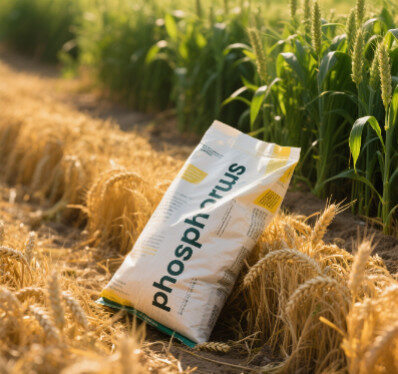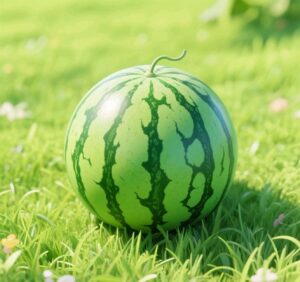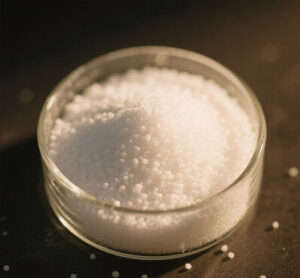Phosphate fertilizers are mineral or synthetic compounds primarily supplying phosphorus (P) as an essential macronutrient for plant growth. There are five types of phosphorus fertilizers commonly used in crops, namely: monoammonium phosphate, diammonium phosphate, superphosphate, calcium magnesium phosphate fertilizer, and potassium dihydrogen phosphate.
I. Monoammonium Phosphate (MAP)
Chemical Formula: NH₄H₂PO₄
Key Properties:
-
Acidity: pH 4-8 (soil-dependent), requires pH monitoring
-
Solubility: 392 g/L at 20°C (rapid dissociation to H₂PO₄⁻ + NH₄⁺)
- Powder Common Nutrient Content:
- N (ammoniacal nitrogen)-P₂O₅ (highly concentrated): 12-61-0
- Granular Common Nutrient Content:
- N (ammoniacal nitrogen)-P₂O₅ (highly concentrated): 12-52-0 11-52-0 10-50-0 11-48-0 11-47-0 10-46-0 11-44-0
Comparison Between Thermal and Wet Processes for Monoammonium Phosphate (MAP) Production
1.1. Raw Material Pathways
| Parameter | Thermal Process | Wet Process |
|---|---|---|
| Phosphoric Acid Production | Elemental phosphorus combustion → P₄O₁₀ hydration → Thermal acid (85%) | Phosphate rock + H₂SO₄ → Wet-process acid (52-54%) |
| Ore Grade Requirement | High-grade rock (P₂O₅ ≥30%) | Medium/low-grade rock (P₂O₅ ≥26%) |
| Sulfur Dependency | None | 1.6-1.8 t H₂SO₄ per t MAP |
1.2. Core Process Characteristics
Thermal Process Features:
-
Reaction temperature: 1000-1200°C (P₄ combustion)
-
Acid purity: ≥85% (impurities <0.5%)
-
Neutralization: Gaseous NH₃ + thermal acid direct reaction
-
Energy consumption: 8-10 tce/t MAP
Wet Process Features:
-
Digestion temperature: 60-80°C
-
Acid purity: 52-54% (1-3% impurities)
-
Neutralization: Liquid-phase reaction requiring concentration
-
Energy consumption: 3-4 tce/t MAP
1.3. Product Quality Comparison
| Specification | Thermal MAP | Wet MAP |
|---|---|---|
| P₂O₅ content | ≥62% | 58-61% |
| Heavy metals (Cd) | ≤2 ppm | 5-15 ppm |
| Fluoride content | ≤0.05% | 0.3-0.8% |
| Water insolubles | ≤0.1% | 0.5-1.2% |
| Crystal morphology | Well-defined prisms | Amorphous granules |
Agronomic Applications:
-
Crops: Cereals, oilseeds, horticultural plants
-
Soil Compatibility: All types except high-pH calcareous soils
-
Industrial Use: Base material for NPK compounds & water-soluble fertilizers (WSF)
II. Diammonium Phosphate (DAP)
Chemical Formula: (NH₄)₂HPO₄
Distinctive Characteristics:
-
Alkalinity: pH 7.8-8.2 (neutralizes acidic soils)
- Powder Common Nutrient Content:
- N (ammoniacal nitrogen)-P₂O₅ (highly concentrated): 21-53-0
- Granular Common Nutrient Content:
- N (ammoniacal nitrogen)-P₂O₅ (highly concentrated): 18-46-0, 12-42-0
Application Guidelines:
-
Optimal Soils: Acidic soils (pH <6.5)
-
Restrictions: Avoid alkaline soils (pH >7.5) to prevent root scorching
-
Regional Advisory: Not recommended for northern China’s calcareous soils
III. Single Superphosphate (SSP)
Composition: Ca(H₂PO₄)₂·H₂O + CaSO₄
Technical Specifications:
-
Acidity: pH 2.5-3.5 (soil acidifying effect)
-
P Availability: ≥12-18% P₂O₅ (highly soluble citrate-soluble P)
-
Secondary Nutrients: ≥18-21% Ca, ≥8% S
Field Implementation:
-
Target Soils: Acidic to neutral soils (pH 5.5-7.0)
-
Precaution: Apply banded to minimize P fixation by Fe/Al oxides
-
Soil Amendment: Enhances aggregate stability via gypsum content
IV. Calcium Magnesium Phosphate (CMP)
CMP is a natural mineral fertilizer produced by mixing phosphate rock with magnesium-silicon ores and calcining at temperatures above 1450°C to form a vitreous material, which is then water-quenched and ground. It undergoes no chemical treatment, contains no acid radicals, and has a pH of 8.5 (slightly alkaline), making it a natural conditioner for acidic soils and soils acidified by long-term chemical fertilizer use.
This fertilizer is rich in 10 macro, secondary, and micronutrients, including phosphorus (12%, 15%, or 18%), calcium (34%), magnesium (10%), and silicon (31%), as well as trace elements such as copper, iron, zinc, manganese, boron, and molybdenum. With total nutrient content exceeding 80%, it surpasses any compound fertilizer in nutritional value. Notably, its silicon content exceeds 31%, allowing it to also function as a standalone silicon fertilizer.
Chemical Structure: α-Ca₃(PO₄)₂ + CaMgSiO₄
Unique Attributes:
-
pH Neutrality: 7.0-7.5 (no soil pH alteration)
-
Nutrient Spectrum: powder or granular
-
P₂O₅: 16-18%
-
CaO: 25-38%, MgO: 8-20%
-
-
Mobility: Slow-release via silicate matrix
Deployment Strategies:
-
Soil Types: Alkaline/sodic soils (pH >7.5)
-
Synergistic Use: Combines with organic fertilizers to boost PUE by 25%
-
Crop Suitability: Calcium-loving crops (e.g., tomatoes, apples)
V. Monopotassium Phosphate (MKP)
Formula: KH₂PO₄
Premium Features:
-
P-K: 52% P₂O₅ + 34% K₂O
-
Solubility: 220 g/L at 20°C (ideal for fertigation)
-
pH Modulation: Buffers solution pH at 4.5-5.5
Precision Agriculture Applications:
-
Crop Targets: High-value horticulture (e.g., grapes, greenhouse vegetables)
-
Application Methods:
-
Base dressing: 200-400 kg/ha
-
Foliar spray: 0.3-0.5% solution
-
-
PUE Enhancement: Reduces P fixation by 40% vs. conventional P sources
Ⅵ.Potassium Phosphite (MIKP)
-
Chemical Formula: KH₂PO₃
- P-K: 58% P₂O₅ + 38% K₂O
-
Systematic Name: Potassium dihydrogen phosphite
-
Molecular Weight: 120.09 g/mol
-
Phosphorus Oxidation State: +3 (phosphite form, PO₃³⁻)
-
Appearance: White crystalline powder or granules
-
Solubility: Highly water-soluble (≥600 g/L at 20°C)
-
pH (1% solution): 6.0–6.5 (near-neutral)
Key Differences Between MKP (KH₂PO₄) and MIKP (KH₂PO₃)
-
Chemical Form
-
MKP: Orthophosphate (+5P, PO₄³⁻) – direct P nutrient.
-
MIKP: Phosphite (+3P, PO₃³⁻) – indirect P source + biostimulant.
-
-
Function
-
MKP: Pure P/K fertilizer (promotes growth/flowering).
-
MIKP: Dual role (P/K supply + systemic disease resistance).
-
-
Mobility
-
MKP: Xylem-mobile only.
-
MIKP: Phloem+Xylem mobile (faster translocation).
-
-
pH
-
MKP: Acidic (pH 4.5–5.5).
-
MIKP: Near-neutral (pH 6.0–6.5).
-
-
Usage
-
MKP: Base/top-dressing for yield.
-
MIKP: Foliar/drip for stress/disease prevention.
-
Note: MIKP is not a replacement for MKP but complements it in IPM programs. Avoid mixing MIKP with copper-based fungicides.
Agronomic Impact Summary
| Fertilizer | PUE Range | Carbon Footprint (kg CO₂-eq/t) |
|---|---|---|
| MAP | 20-25% | 1.8 |
| DAP | 18-22% | 2.1 |
| SSP | 15-18% | 0.9 |
| CMP | 25-30% | 1.2 |
| MKP | 35-40% | 3.5 |
PUE: Phosphorus Use Efficiency
Conclusion: Toward Precision Phosphorus Management
The future of P fertilization lies in:
-
Product Engineering: Polymer-coated MAP for 60-70% PUE
-
Biological Integration: PSB-enhanced SSP formulations
-
Circular Systems: Urban P recovery for 30% supply substitution by 2030
“Optimizing phosphorus use isn’t merely agronomic efficiency – it’s existential necessity for planetary boundaries.”
― Global Phosphorus Initiative, White Paper 2024
Disclaimer: Nutrient availability data based on neutral citrate solubility (AOAC 958.01). Regional adaptations may apply.









